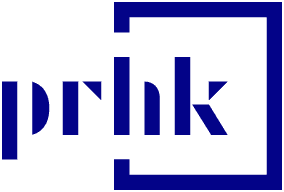PRHK Viewpoints: 3 ways Hong Kong PRs can level up their 2020 social media efforts
Having weathered the instability brought on by last year’s protest and now dealing with the COVID-19 coronavirus outbreak, PR and marketers in Hong Kong are now going through a critical time. PRs They will need to be increasingly flexible and more pre-emptive when it comes to their planning for 2020. But what does being “flexible” really mean? And how can those working in marketing or PR adapt their plans to incorporate this? Given the disruption to normal working practices, it has become even more important to understand our role in ensuring both internal and external communications are effective, even in uncertain times.
As an agency, it is up to us to help brands identify key objectives and set priorities. In order to understand what is front of mind for marketers, we recently surveyed senior marketers from 30 brands across Asia-Pacific to learn about their top priorities in 2020 and uncover their strengths and opportunities.
Oddly enough, areas like content marketing and lead generation, which were listed high on the priority list, were also the areas that brands said they excelled in. We dug deeper and compared each element of marketing and its priority ranking, against how well or not brands believe the performed. The results got us thinking – are brands focusing too much on their own prescribed priorities and not enough on the areas in which they need more help?
One of the areas in which brands feel they can improve is ‘Social Media Marketing’. This means that while most of us consider social media’s role vital, PRs and marketers still lack confidence and understanding. For many, social media marketing has reached a point of stagnation, where marketers are familiar with the need to use it, yet are struggling with taking it to the next level. So how can Hong Kong brands move the needle in this area?
Here are three key areas to focus on.
1. Being more responsive
Social media has been disrupting traditional communications for the past decade, making every individual a journalist. Thanks to its real-time nature, social media can also become a significant channel during times of unrest. The optimum lead time required to respond to audiences is much shorter and as much as we always encourage communications and business teams to work closely together when responding to enquiries, this can also slow the process.
For example, in the past, we might have had a day or a few hours to respond to journalist enquires. Today, the expectations for responses on social platforms like Facebook, Twitter, Instagram, WeChat or Weibo have reduced to an hour or even less. Those brands who can shorten this timeline are likely to build better customer affinity and gain more insights from the issues that their customers are facing.
Being responsive also means planning for any unpredictable changes in sentiment and understanding how that may impact your stance, your stories and your communication efforts, and subsequently how you want your brands to be seen.
2. Using social media to join up PR and marketing functions during uncertain times
Being integrated and creating business impact have always been the two key priorities for PRs and marketers. However, bringing the two together has proved challenging.
The traditional methodologies and objectives of PR and marketing are often created with very different motivations and as such, the evaluation benchmarks are different. These days, social media is seen as a default channel and is often used as-is and without a robust strategy backing it up. As a result, digital or social marketing efforts are often carried out independently from PR efforts.
In addition to this, there is an oversimplified categorisation that marketing is skewed towards products and services communications, whilst PR is more for brand communication. This overgeneralisation does not help when omnichannel is the norm. Another misunderstanding is that PR is earned, so it brings credibility, and marketing is paid so it brings performance. This type of dichotomy also no longer applies.
For brands to continue to disrupt and lead in the area of social media marketing, while also contributing to wider business goals, strategies need to take an integrated omnichannel approach. With market current challenges, this may be a good time to reevaluate PR and marketing plans to ensure approaches are based on a holistic, consistent, seamless, and most of all, aligned narrative that speaks for both the brand and its offerings. This narrative has to be based on personas to create an experience for audience members to discover the brand and eventually become advocates for it.
3. The chief content officer is an integral role
Once we have a joined-up narrative with buy-in from both PR and marketing teams, we then need to bring it to life. This is where content delivery becomes key. Our content marketing managers predict that the role of chief content Officer will rise in importance and become a priority for businesses in 2020.
With the flooding of various types of paid, sponsored, shared, pushed and earned content online, “out of sight is out of mind” holds particular truth in communications nowadays. A constant stream of content will be necessary to allow your brands to stay on the radar of target audiences. In the face of unpredictable disruptions, maybe this is a good time to review above-the-line strategies and consider how best to split your spend between digital marketing and traditional ad placements?
Another key aspect will be the content format. Social media is all about enjoyable and relatable bite-sized content. If media relations can be likened to your go-to main course, social media content could well be your tapas-style, lighter meals, which often provide more instant gratification. Thus, PRs will have the task of reducing narratives to creative and interactive content pieces that engage with audiences while linking back to the holistic brand story.
2020 will surely come with its challenges, so it is up to every one of us working in the communications sector to bring better synergy between marketing and PR functions in order to ensure campaigns can work across all channels, including social media.
Kate Kwan is general manager for the Bay Area, Greater China at LEWIS, an agency member of PRHK, Hong Kong’s association for PR and communications professionals.




